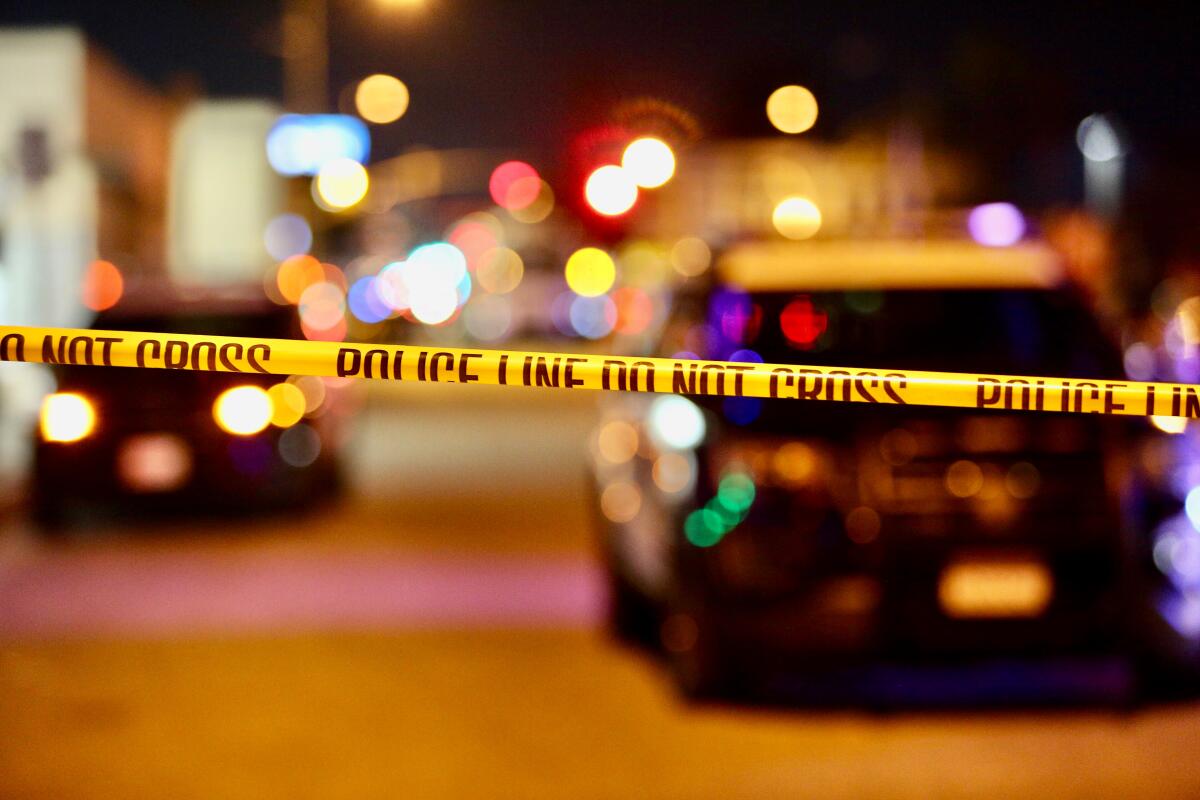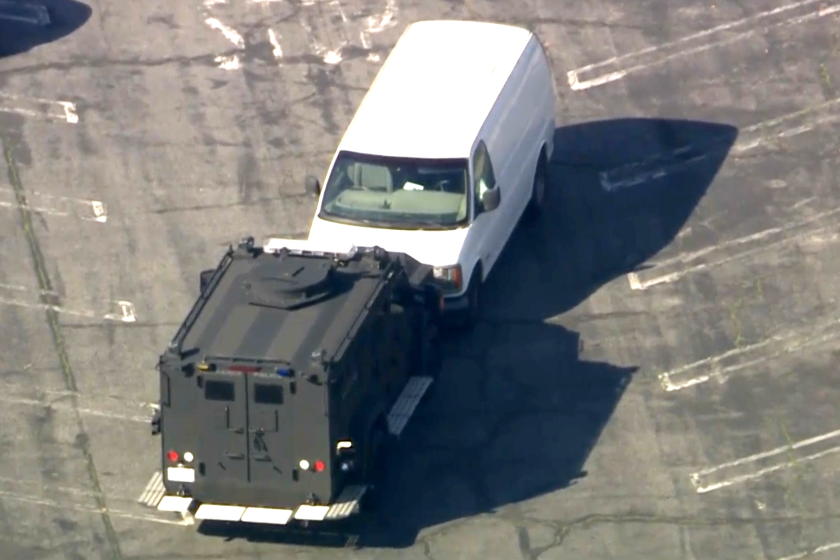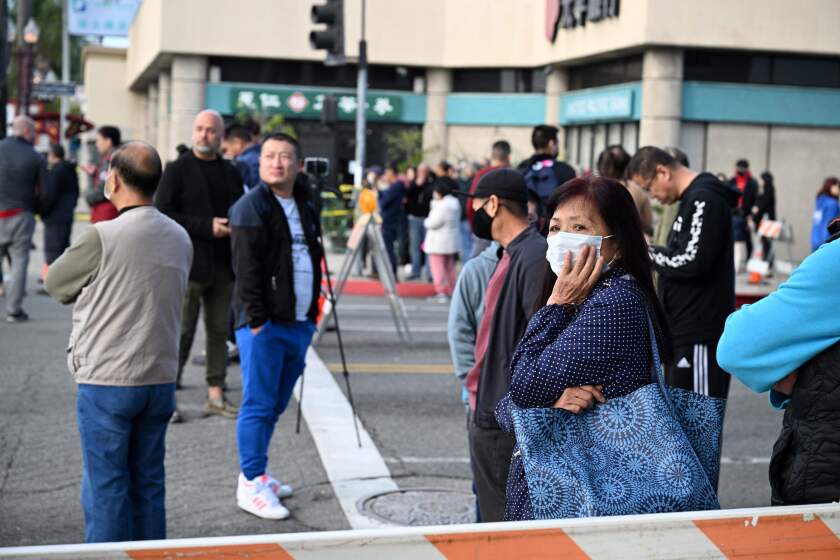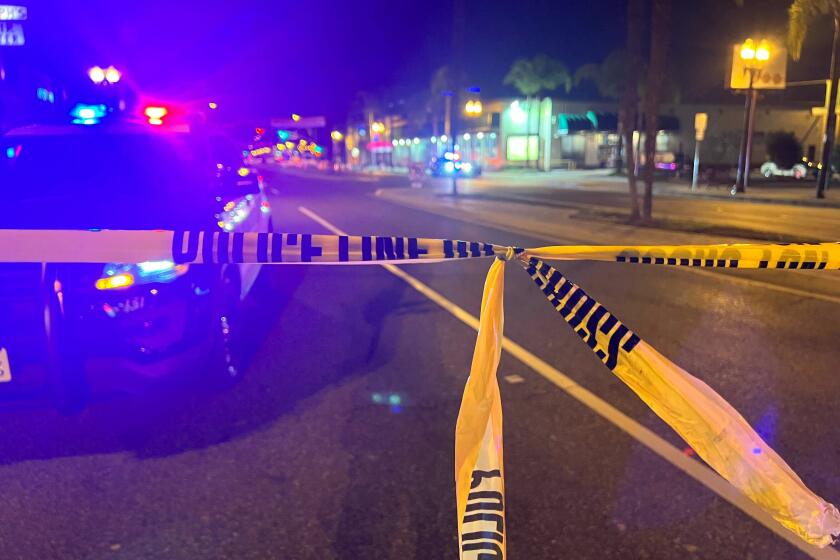With a mass shooting in the news, here are tips to improve your safety and your mindset

- Share via
A mass shooting can create terror and worry no matter where it happens. But that can feel more pronounced when it happens close to home, as it did Saturday, when a gunman opened fire in a dance studio in Monterey Park, killing at least 10 people and wounding 10 others.
Experts in self-defense stress that being prepared and conscious of your surroundings is key if you find yourself caught in a violent incident.
According to FBI data, between 2000 and 2018, 884 people died in 277 U.S. active shooter incidents, defined as “an individual actively engaged in killing or attempting to kill people in a confined and populated area.”
A mass shootings is when four or more people are shot, according to Gun Violence Archive, a nonprofit that tracks data on gun-related violence.
In 2018, there were 39,740 gun-related deaths in the U.S., according to data from UC Davis Health. Of those, 61% were suicides, 35% homicides, and just 0.2% were the result of a mass shooting.
So although mass shootings are very rare, they are once again occupying the news and our fears. Here’s what you should know.
A deadly mass shooting inside a Monterey Park dance studio led authorities to Torrance on Sunday, where the suspected gunman died of a self-inflicted gunshot wound in a strip mall parking lot.
Use the ‘run, hide, fight’ model
The U.S. Department of Homeland Security suggests you use the “run, hide, fight” model if you ever find yourself in a mass-shooting incident.
Brian Rauchbach, owner and head trainer at Elite Training Center in Redondo Beach, teaches several forms of mixed martial arts, as well as active shooter self-defense courses.
“The classes,” he told The Times after a string of mass shootings in 2021, “take a view into the possibility of engaging active shooters and what that means both mentally and physically for somebody who’s a civilian.”
Katie Toney, manager at Elite Training Center, emphasized the importance of active shooter training for everyday people.
“Basic citizens are the first line of defense,” Toney said in 2021. “So they kind of have to have some general idea what to do before law enforcement arrives.”
Training on the “run, hide, fight” method is commonplace in some workplaces and schools now, but what does it really mean?
Families rush to the Langley Senior Center in Monterey Park, seeking information about victims of the shooting that killed 10 and injured 10.
Run
In any public space, Rauchbach said, people should be aware of their surroundings and the “baseline” of behavior. That means seeing how people around them walk, talk and act.
“People who are engaged in making plans to do harm to other people will stand outside of that baseline because they do different things. They dress differently, they look differently, they start to engage with people differently,” Rauchbach said. “And as soon as they start to enact their plans or start walking through their plans, they definitely stand out.”
If you find yourself in a situation where there is gunfire, your natural reaction may be to freeze. It’s how long you take to thaw out and start to move that’s important, Rauchbach said.
Your main focus should be on putting as much “distance between yourself and the shooter” as possible, Matthew Johnson told The Times in 2021. Johnson is the founder of Cohen Security, a San Diego firm that provides security services and training on active shooting situations.
In other words, run away.
“It’s very difficult to hit a moving target,” Rauchbach said. “Either if you’re aggressing or you’re moving away from something, or you’re attacking, you still go from a position to a position, and those positions tend not to be in straight lines.”
While running, it’s important to make yourself a difficult target. That means keeping low, moving quickly and keeping quiet. You may want to scream, Rauchbach said, but that can draw attention.
Hide
Suicide prevention and crisis counseling resources
If you or someone you know is struggling with suicidal thoughts, seek help from a professional and call 9-8-8. The United States’ first nationwide three-digit mental health crisis hotline 988 will connect callers with trained mental health counselors. Text “HOME” to 741741 in the U.S. and Canada to reach the Crisis Text Line.
If you can’t get away, Johnson said, the next step would be “to put as many obstacles or barriers in between yourself and the shooter.”
Rauchbach said there are two options for hiding: concealment and cover.
Doors, shelves and desks are forms of concealment. They’ll hide you from a shooter’s line of sight, but they won’t stop a bullet.
Things like brick walls, concrete pillars and solid steel provide the cover needed to stop bullets, but structures like that aren’t always readily available.
That’s when Rauchbach said to combine steps one and two — run from cover to concealment and vice versa — until you reach safety.
Fight
If all else fails, you may end up having to fight.
Any number of objects around you — canned food in a grocery store, books or computers in a classroom or office — can be used defensively.
Johnson says the specific object you use to defend yourself isn’t what matters, but the dedication to making the decision to fight.
“We’re talking about literally fighting for your life right here, so anything can become a defensible weapon, doesn’t matter if it’s a book, a chair,” Johnson said. “When people think ‘fight’ and ‘a weapon,’ it doesn’t necessarily have to be a knife or a firearm. It can just be something, anything that you can turn into a weapon and can be used to help defend your life.”
Once you’ve decided to fight, Rauchbach said, it’s much more effective to coordinate an attack with other people. The main goal of an attack should be to disarm and “destroy” the target.
If the shooter has a handgun, Rauchbach said, focus on attacking the limb that’s in control of the firearm. In the case of long guns, such as an AR-15, gain control of the firearm by redirecting the barrel first. Then take down the shooter.
What else you should know
“Run, hide, fight” isn’t an exact science.
“It’s always up to the individual judgment at the scene at the time,” Johnson said.
In reality, there isn’t time in some of the rare mass shooting incidents to recognize what’s happening in the first place, as in the case of the six-minute Aurora, Colo., movie theater shooting in 2012. Still, education, preparation and training play a part in improving your safety, as well as your frame of mind, according to Rauchbach.
“The most important aspect of all of this is mindset,” Rauchbach said. “People focus on the physicality side of it a lot, but the mindset side is truly everything. You’re not going to engage correctly if you don’t have the proper mindset.”
After the Monterey Park dance studio shooting, the gunman went to another dance facility, where he faced resistance, law enforcement said.
More to Read
Sign up for Essential California
The most important California stories and recommendations in your inbox every morning.
You may occasionally receive promotional content from the Los Angeles Times.

















